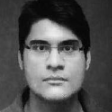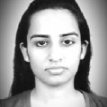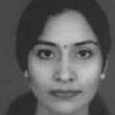International Journal of Modern Education and Computer Science (IJMECS)
IJMECS Vol. 5, No. 9, 8 Sep. 2013
Cover page and Table of Contents: PDF (size: 312KB)
A Cost Efficient Solution for Surface Technology with Mobile Connect
Full Text (PDF, 312KB), PP.32-37
Views: 0 Downloads: 0
Author(s)
Index Terms
Android, Image Processing, Sensors, Surface Technology, Surface Technology with Mobile Connect (STMC).
Abstract
For the past few decades we have seen the evolution of user interfaces from CLI (Command Line Interface) to GUI (Graphical User Interface) to the most recent NUI (Natural User Interfaces). One such example is Surface Computing. Surface computing is a new way of working with computers that moves beyond the traditional mouse-and-keyboard experience. It is a natural user interface that allows people to interact with digital content with their hands, with gestures and by putting real-world objects on the surface. Though very convenient and simple to use, the cost of this technology is one of the major hindrances in making it accessible to common users. Microsoft PixelSense is an excellent example of this technology. For making this technology cost efficient and more accessible, we have designed an interactive table. It allows two mobile phones to interact with each other, i.e. one can share mobile content just by placing two phones on the table and dragging the content from one phone to another using their fingers. Instead of the usual resistive and capacitive touchscreens used these days, it uses an imaging touch screen, i.e. image processing is used to determine the fingertip coordinates and handle data according to these coordinates thereby decreasing the cost of this technology sharply.
Cite This Paper
Nitin Sharma, Manshul V Belani, Indu Chawla, "A Cost Efficient Solution for Surface Technology with Mobile Connect", International Journal of Modern Education and Computer Science (IJMECS), vol.5, no.9, pp.32-37, 2013. DOI:10.5815/ijmecs.2013.09.05
Reference
[1]http://en.wikipedia.org/wiki/Natural_user_interface
[2]Rajesh C, Muneshwara M.S, Anand R, Bharathi R, Anil G.N., “Surface Computing: A Multi Touch Technology (MTT)- Hands on an Interactive 3D Table”, Coimbatore Institute of Information Technology Presented at the International Conference on Computing and Control Engineering (ICCCE), 2012.
[3]http://en.wikipedia.org/wiki/Surface_computing
[4]http://en.wikipedia.org/wiki/Microsoft_PixelSense
[5]Allison Jeffers Gainey, “Microsoft Surface: Multi-Touch Technology”, Winthrop University, Rock Hill, SC, USA, 2008.
[6]http://www.microsoft.com/enus/pixelsense/pixelsense.aspx
[7]http://teslaui.wordpress.com/2013/02/24/processing-arduino/
[8]RonyFerzli, Ibrahim Khalife, “Mobile Cloud Computing Educational Tool For Image/Video Processing Algorithms”, Digital Signal Processing Workshop and IEEE Signal Processing Education Workshop (DSP/SPE), 2011 IEEE, 2011, pp. 529-533.
[9]Shahzad Malik, “Real-time Hand Tracking and Finger Tracking for Interaction”, University of Toronto, 2003.
[10]http://opencv.org/
[11]B.Sindhu&N.Sneha,“Surface Computing”, Prakasam Engineering College, Kandukur, 2010.
[12]Ankit Gupta, Kumar AshisPati, “Finger Tips Detection and Gesture Recognition”, Indian Institute of Technology, Kanpur, 2009.
[13]Jagdish Lal Raheja, Karen Das, Ankit Chaudhary, “An Efficient Real Time Method of Fingertip Detection”, 7th International Conference on Trends in Industrial Measurements and Automation (TIMA 2011), CSIR Complex, Chennai, India, 2011.


